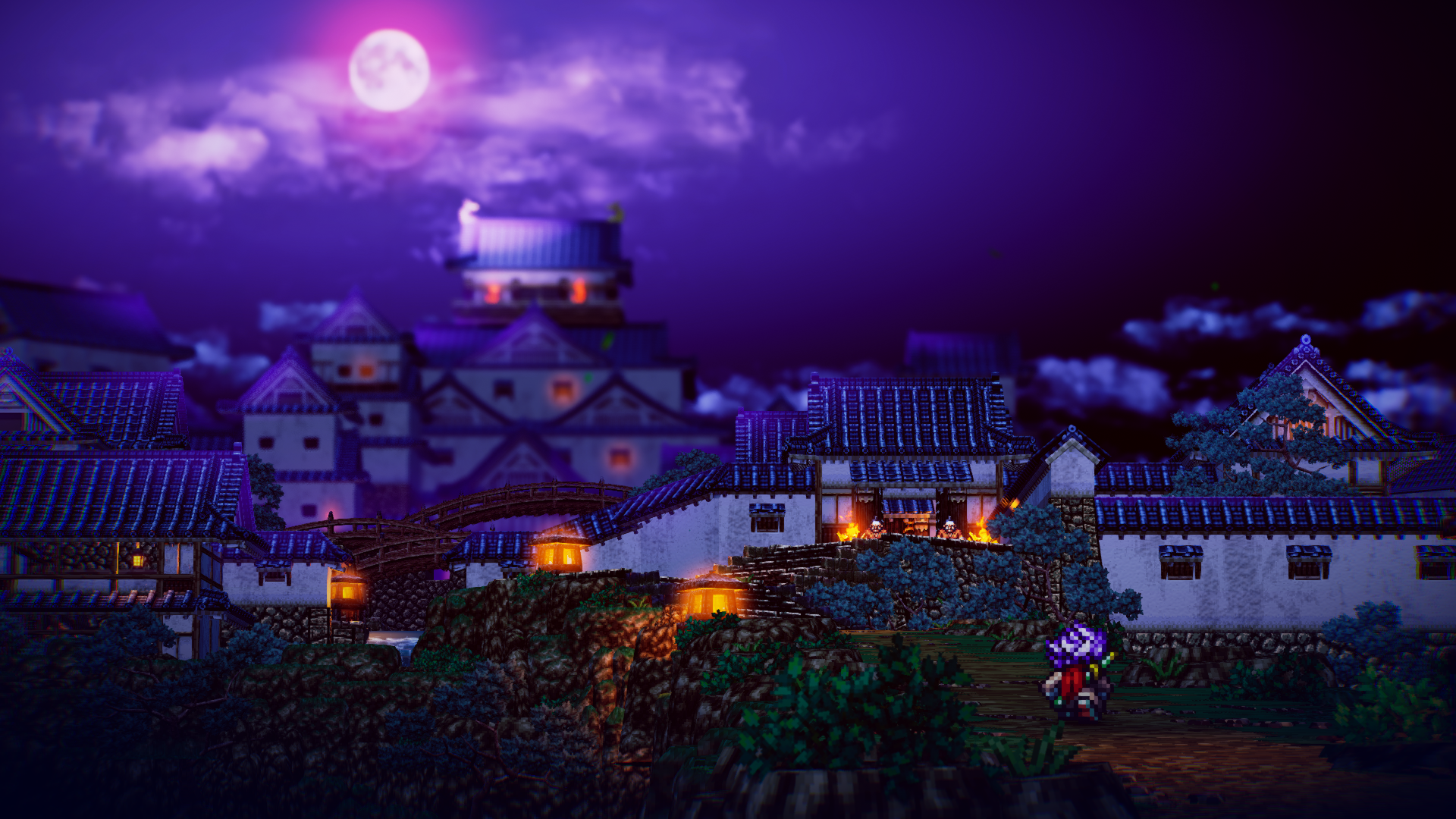
Back in 1994, Square Enix (or Square Soft as they were known back then) released a unique JRPG for the Super Nintendo called Live A Live. Unlike most JRPGs at the time which had a single 20-to-40-hour storyline, Live A Live was an anthology of short stories that told the tales of various heroes across human history, each with their different tones and settings.
It was praised at the time for its unorthodox style of gameplay and storytelling while boasting a memorable soundtrack and striking visuals. However, Live A Live was never released outside of Japan despite Square Enix’s growing popularity in the West during the 1990s thanks to successful titles such as Final Fantasy VI and Chrono Trigger. That would all change in 2022 when Square Enix released a remake of Live A Live for the Nintendo Switch and shipped it worldwide for the first time. Then in 2023, Square Enix announced that Live A Live would be ported onto PlayStation consoles and PC via Steam on Apr. 27, 2023.
As a fan of Square Enix’s works since Final Fantasy IX on the PlayStation, I was intrigued by Live A Live’s premise as it was unlike anything I’d seen before aside from Octopath Traveler. Thankfully, my curiosity would be sated as Square Enix provided us with an early review code for the PC version of Live A Live for us at Window Central to review. After completing the game, I was genuinely sad when my playthrough ended, as Live A Live was one of the most fun JRPGs I have played in a very long time and is my personal favorite game of 2023 so far.
Disclaimer: This review was made possible by a review code provided by Square Enix. The company did not see the contents of the review before publishing.
Live A Live: Presentation and performance
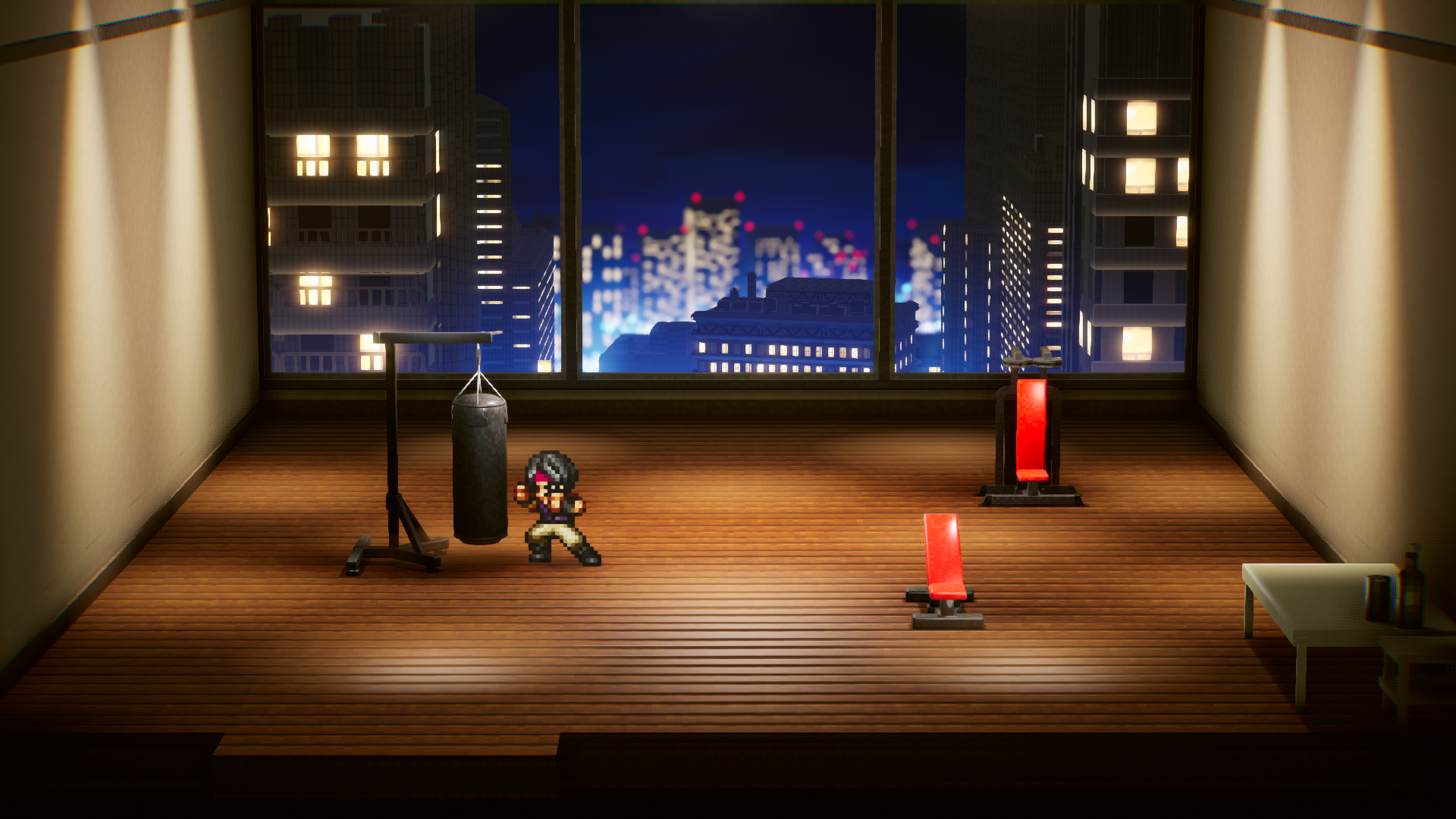
Let’s start things off with the presentation. This remake takes the original Super Nintendo version’s 16-bit graphics and modernizes them by using an HD-2D art style as seen in Square Enix’s Octopath Traveler series and Triangle Strategy. As a result, Live A Live features gorgeous and detailed 2D sprite animations set against 3D backgrounds with atmospheric lightning and high-definition polygons — preserving its retro charm while maintaining modern graphical fidelity.
What enhances this visual fiesta is that Live A Live on PC is capable of running at 60fps and 1080p resolution. I was playing the game with a PC rig equipped with an NVIDIA GeForce RTX 3070 graphics card and Intel Core i5-9400 CPU, so I was able to achieve the maximum graphical settings with ease. However, if you don’t have the budget for the best graphics cards, using low-end, cheaper graphics cards will still suffice as this game’s PC spec requirements aren’t demanding.
On the audio side of Live A Live’s presentation, it complements its superb graphics with well-done voice acting for both English and Japanese dubs, bringing in stellar performances for the game’s emotionally poignant moments. Live A Live also features an incredible soundtrack composed by Yoko Shimomura, who is notable for composing music for the Kingdom Hearts series, Parasite Eve, Street Fighter II, Xenoblade Chronicles, Final Fantasy XV, the Mario & Luigi RPG series, and many others.
The soundtrack, in my opinion, is one of the game’s strongest aspects as it features a wide variety of songs and tunes that perfectly match the tone and atmosphere of each chapter. From emotional orchestral ballads to heart-pumping battle music that uses a mixture of rock and synth, this soundtrack simply has it all.
Live A Live: Stories
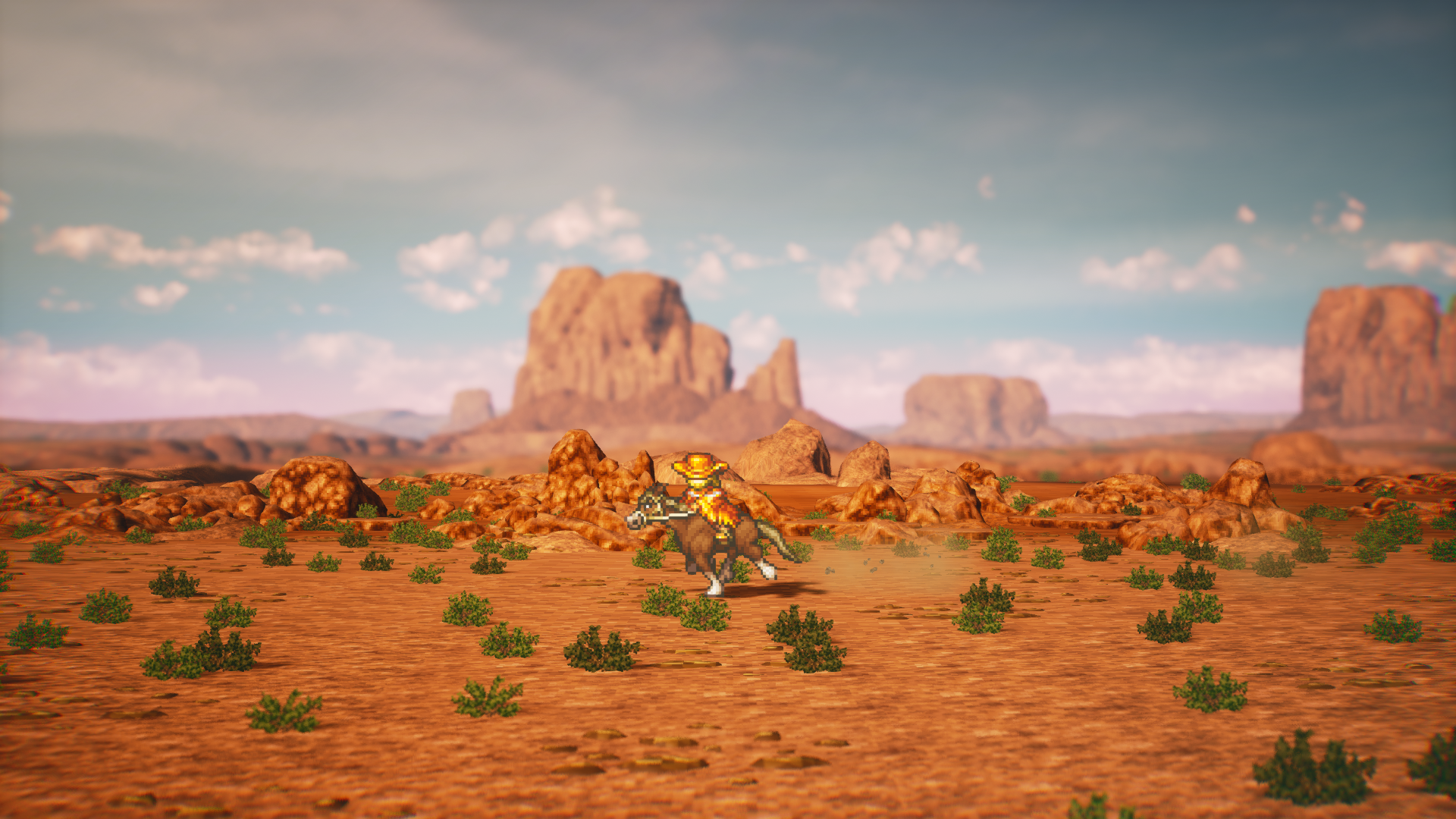
Live A Live weaves the tales of protagonists (who you can choose to rename) through several time periods and settings from the pre-historic era all the way to the far distant future. These short stories are as follows:
Prehistory: A lighthearted adventure starring Pogo, a caveman during the pre-historic era gathering food for his tribe and trying to protect his girlfriend Beru from being kidnapped by a rival tribe.
Imperial China: A somber story about an old martial artist in Ancient China who realizes that his life is coming to an end and sets out on a journey to find worthy disciples to pass on his Earthen Heart Kung Fu techniques to.
Twilight of Edo Japan: You play as Oboromaru, a ninja of the Enma Clan tasked with the dangerous mission of rescuing a mysterious prisoner from Ode Iou, a warlord who is dead set on conquering feudal-era Japan.
The Wild West: A Wild Western-style story following the adventures of The Sundown Kid, a wanted outlaw who gets wrapped in a fight for survival to defend a helpless town from a gang of vicious bandits called The Crazy Bunch.
Present Day: A martial arts-themed tale inspired by fighting games where you play as Masaru Takahara, a fighter striving to become the best warrior in the world and learning new techniques from the opponents he fights.
The Near Future: An action story in which you play Akira Tadokoro, a young delinquent orphan with psychic powers. Akira is out to stop the evil biker gang known as the Crusaders from terrorizing his hometown while also rescuing children they have kidnapped. Little does Akira know that his quest will take him on an insane journey involving conspiracies and a world-ending catastrophe that can only be prevented by piloting a giant robot called the Steel Titan into battle.
The Distant Future: In the depths of space aboard the Cogito Ergo Sum spacecraft, you play as a service robot named Cube. You and the crew you serve are en route to deliver an alien creature called the Behemoth back to Earth for study. However, your voyage starts to go wrong as tensions between the crew begin to boil and parts of the ship’s systems are mysteriously malfunctioning...
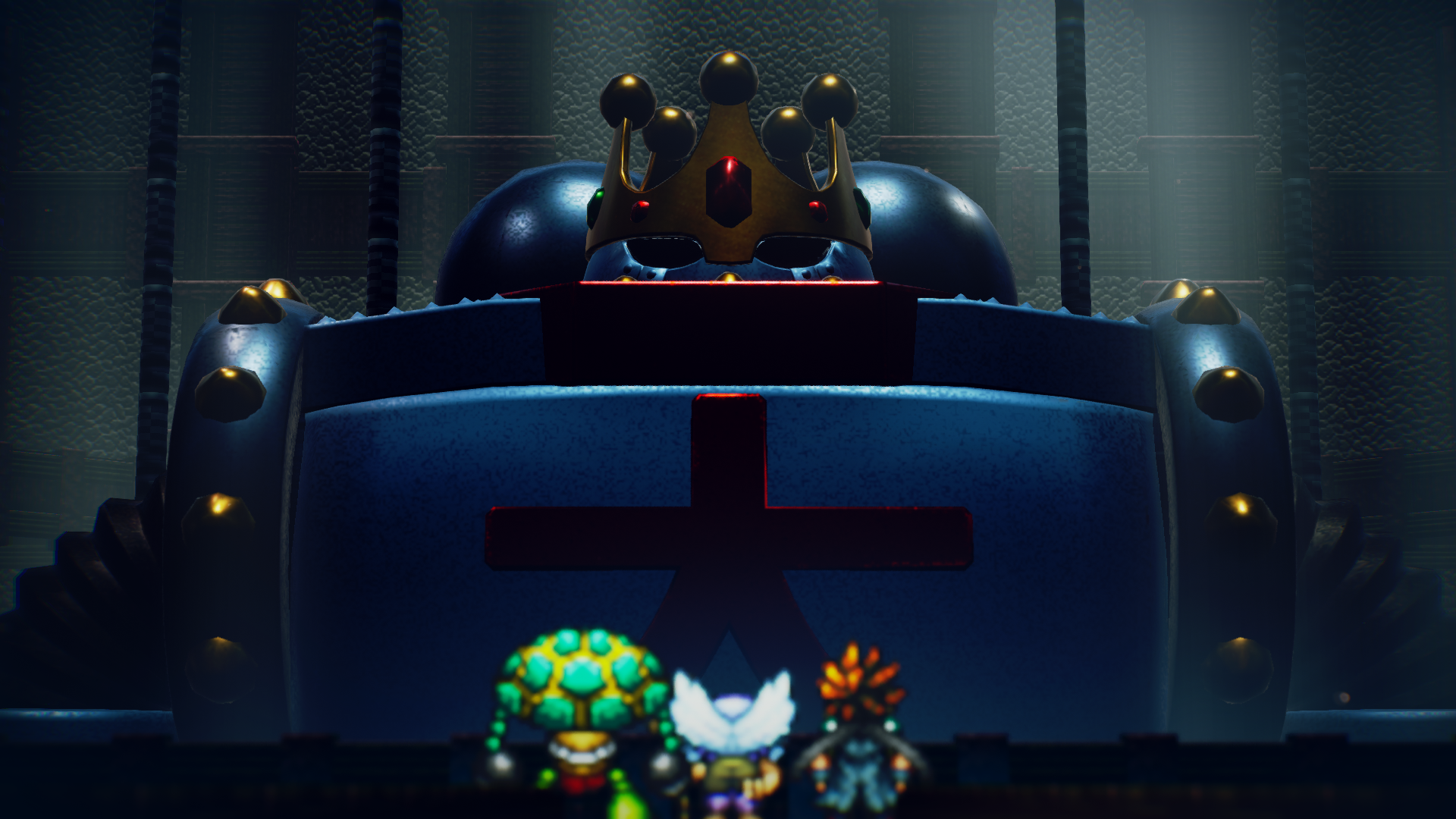
Without roaming deep into spoiler territory, there is also an extra story to unlock after you complete the seven previous chapters. It is set in the Middle Ages, and you play as Oersted, a noble knight striving to protect the land from The Dark Lord. Once that story is complete, you unlock an additional chapter which serves as the game's finale.
I really enjoyed the short stories of Live A Live. They are perfectly paced and don’t overstay their welcome. They have interesting, likable characters who manage to get a substantial amount of screen time and development within a short space of time.
My favorite stories are The Distant Future chapter, Prehistoric chapter, and The Near Future chapter. The Distant Future chapter was a strange yet intriguing sci-fi thriller which, despite barely having any battles, managed to be suspenseful just by the story alone, catching me off guard with plot twists that I never expected.
The Prehistoric chapter was a goofy, fun, and light-hearted adventure that managed to impress me by telling a coherent story purely through character facial animations, grunts, and emoticons without a single line of dialogue.
Finally, the Near Future Chapter is my third personal favorite because it is a loving tribute to the retro giant mecha anime and manga that I grew up with as an impressionable teen, like Mazinger Z and Getter Robo.
Live A Live: Gameplay

The gameplay of Live A Live follows the typical format of most JRPGs — exploring a diverse variety of overworld areas and dungeons, acquiring gear to upgrade your character’s stats, conversing with NPCs to learn more about the world, and defeating enemies in turn-based battles to advance the story.
However, Live A Live puts twists on the formula to match the setting of specific chapters, and they do a good job of immersing you into each chapter's world. For example, the Present Day chapter has no exploration at all and has the player go through a boss-rush gauntlet similar to that of Capcom's Street Fighter series. On the other hand, the Twilight of Edo Japan chapter features stealth mechanics to let you avoid combat entirely as you are a ninja trying to infiltrate a fortress without being seen.
One gameplay element which is consistent throughout every chapter and is a major part of Live a Live is the turn-based combat system. Battles take place on a 7x7 tile grid where the player characters and enemies are free to move on the battlefield and execute special moves or spells when they are in range. However, every combatant must fill the Charge Gauge before they can perform any action.
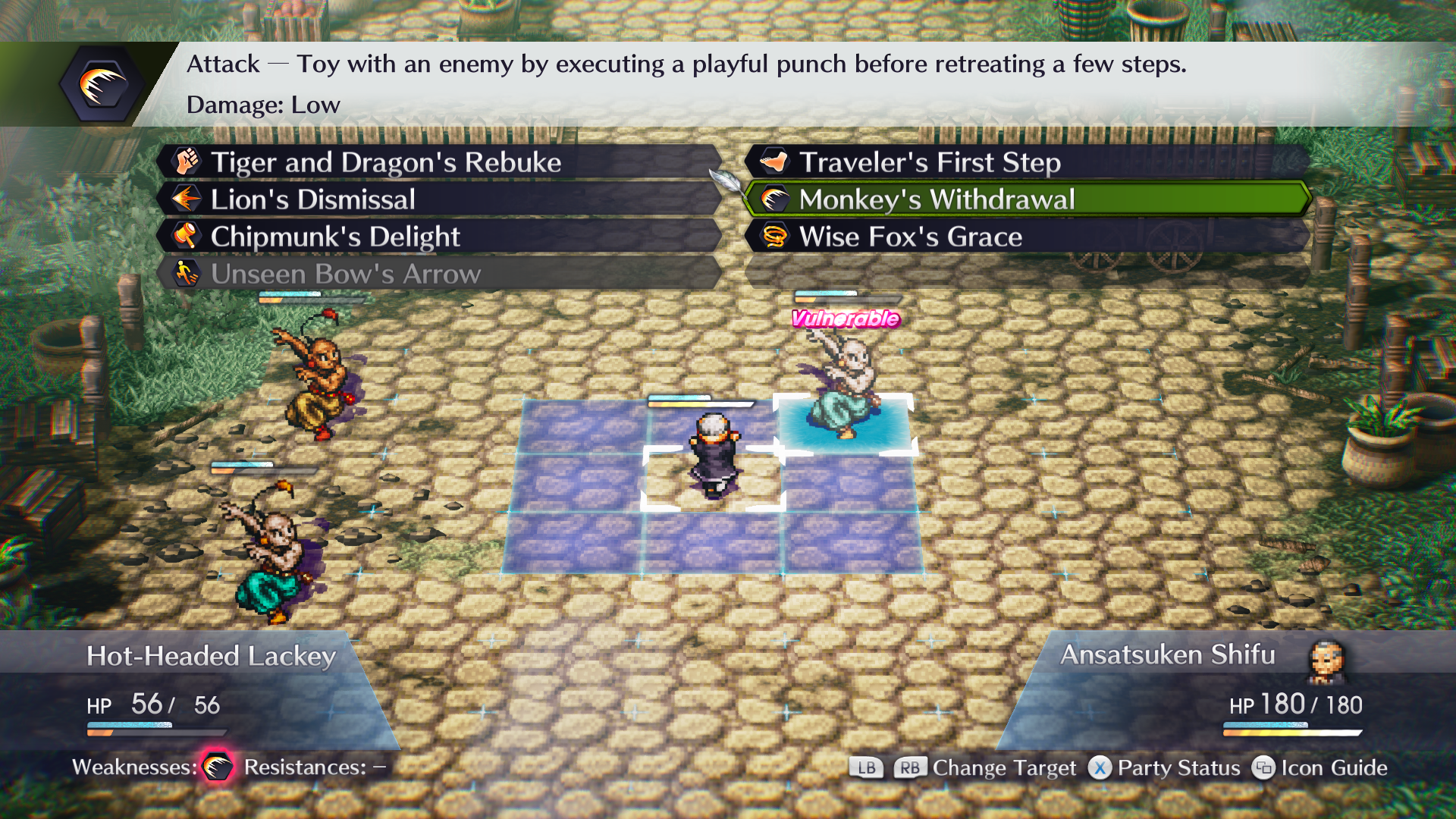
Charge Gauges act as a meter to determine a combatant’s initiative order during a battle and it fills whenever the player or enemy acts. It slowly fills for everyone if you move a party member across the grid or fills a good chunk if you perform an attack or use an item.
You can also use the Wait command and have the Charge Gauges fill on their own or use the Pass command to switch control to another of your party members whose Charge Gauge is close to being filled.
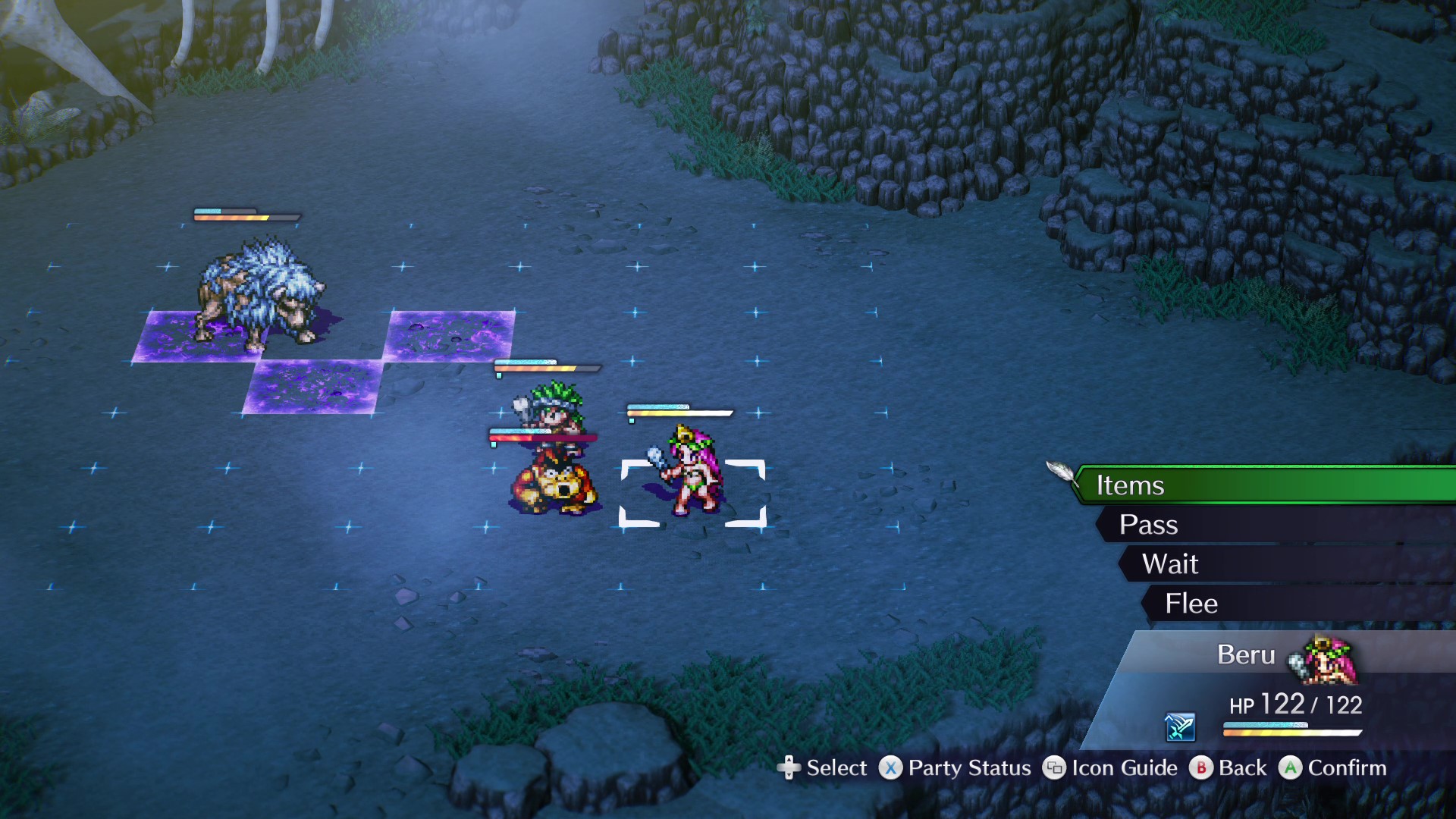
There are also powerful super moves that require the user to spend several turns charging up a special Charge Gauge marked in red, which deals a ton of damage but can be interrupted by using certain abilities.
In addition to Charge Gauges and free movement during battle, Live A Live features another combat mechanic where certain items or skills can turn parts of the area into elemental tile traps that deal damage over time if anyone not immune to a trap’s specific element steps on them.
While the combat system felt strange to use at first, it quickly grew on me once I understood how it worked. It has a fair amount of strategy and in-depth mechanics involved which reward players who use them effectively to defeat their foes.
For instance, during some fights, I moved my party members to surround an enemy to sneak in back attacks while my toughest party member drew their attention, making sure they avoided the enemy’s area-of-effect attacks. In other fights, I used the grid-movement mechanics to force an enemy to waste their turns chasing me across the battlefield as I used ranged abilities and special skills with knockback properties to keep them at a distance.
It was immensely satisfying to see my strategies succeed and witness my characters dispatch the opposition with well-animated, over-the-top special moves. For a combat system originally made in 1994, it holds up remarkably well even against modern JRPGs with more advanced turn-based systems.
Live A Live: Final thoughts
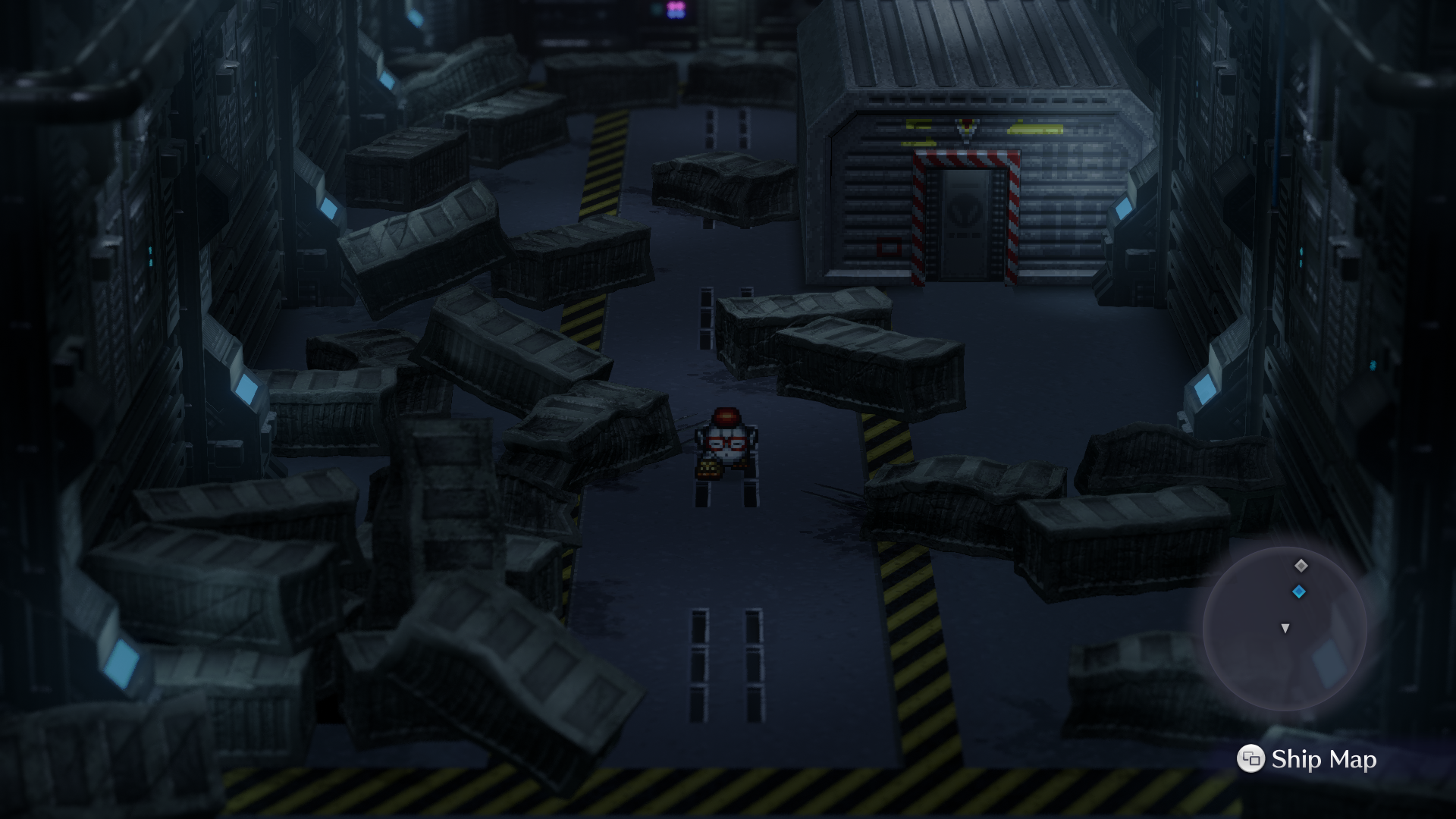
Overall, I loved Live A Live. From its gallery of gripping stories, endearing characters, fun combat system, and gorgeous presentation, this game had me hooked from beginning to end. Not to mention that Live A Live has a ton of replay value as certain chapters feature multiple endings for their stories depending on the player’s choices during them.
Though I will admit, without getting into spoilers, the requirements for the endings of the Twilight of Edo Japan chapter require the player to undertake a series of frustratingly tedious and convoluted tasks that would be impossible to achieve without referring to a strategy guide or looking up the solution online. It’s a shame it was made this way as that issue is the only major gripe I have with this game.
However, that small hiccup didn’t stop me from having a blast playing this hidden gem. If you’re a fan of Square Enix’s earlier works from the Super Nintendo era or a fan of JRPGs in general, then I highly recommend Live A Live as I believe this is one of the best PC games of 2023 released thus far.
Live A Live is set to release on PC (via Steam), PlayStation 4, and PlayStation 5 on Apr. 27, 2023. There is a demo of Live a Live available on all platforms for those who wish to try it out first, and lets players carry their save data over into the full game.







